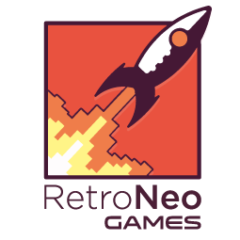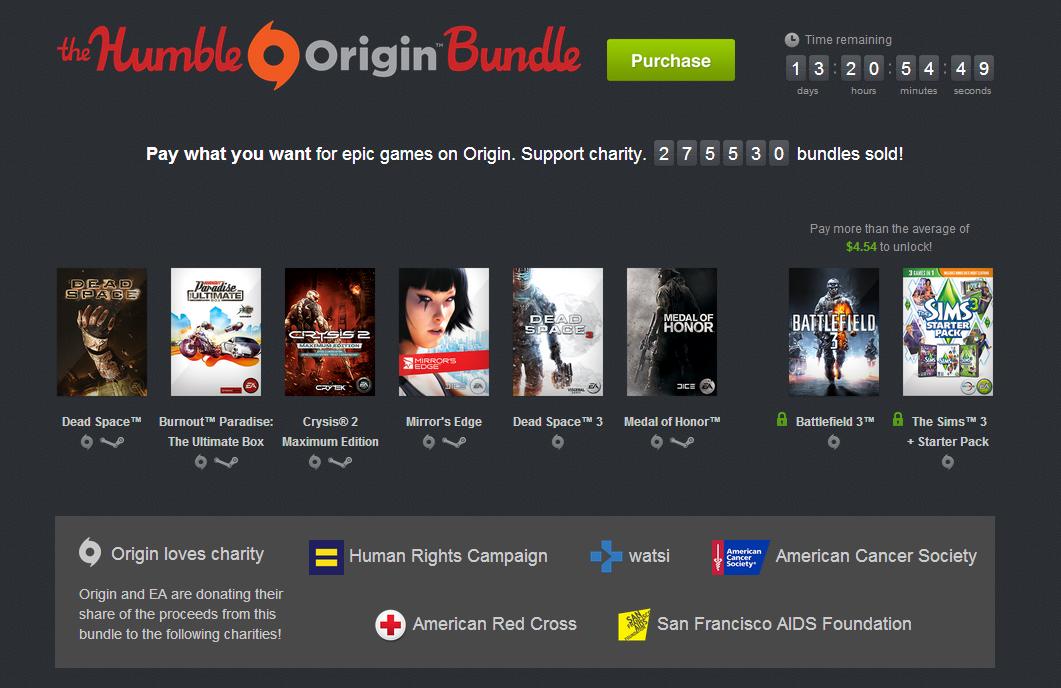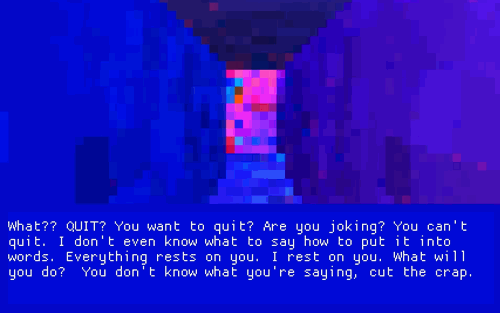
This is the second half of my blog on how to play more games for less money, or completely for free! My first 8 tips were in last week’s blog here.
Before I begin I want to alert you to some current offers. Last week I mentioned demos and a great one just went up on Steam during the week. Free-running zombie-smashing game Dying Light just put out a free demo on Steam. Go here and look for the ‘Download Demo’ button on the right.
You can skip below to “9” if you’re reading after 31 August 2015.
Last week I also mentioned the Steam Free Weekends. This weekend (28-31 August 2015) Mount & Blade Warband is free to play on Steam and discounted at 66% for the duration. This is one of my favourite games in recent years and I’m not even that big an RPG guy. It’s a combination of medieval strategy game, open world trading, RPG, and first person combat. You can do things like raise an army and join a faction or conquer lands and create your own Kingdom, fighting all battles in first or third person (or auto-resolve) as an archer or horse-mounted lancer, all while manipulating nobles and markets. And that’s just the single player! The multiplayer scene is amazing! It’s incredible, and the biggest sell for me is that it has the best sword/melee combat I’ve ever seen in a game! Check it out! The discounted price is €6.79 and you can play for free until Monday to see if you like it.
I also mentioned totally free games to look out for. Humble (who I’ll mention today) are giving away Stealth Inc 2: A Game of Clones: Humble Deluxe Edition totally free until Monday (Aug 31st 2015). They’re also in their Summer Sale with up to 90% discounts and you can make your own Codemasters or Telltale Games Bundles! That’s big!
9. Origin ‘Game Time’

Back to Origin once more (note, this is EA’s store, and will be changing their name in the coming months away from Origin). Under their Free Games tab (pictured above) you can see “Game Time”. If they haven’t flashed this at you as soon as you launched the Origin client (then you’re probably on the web) then this is where to find it.
Again, Origin isn’t great on the amount of games on offer, and there’s only four there now, but these include Battlefield 4 and Titanfall. Definitely AAA games, by any definition. Hey, they may even work by now, it’s been long enough since their release dates (snark snark)!
Game Time is a bit like a Steam Free Weekend that you can start for yourself once, whenever you want. Once the game is installed, the first time you launch it will start a 48 hour countdown (148 hrs for Battlefield 4) in real-world time (not game time) before the game is locked again.
I haven’t done it myself yet, but if you ever find yourself with a guaranteed empty weekend, you could probably get some good mileage out of Battlefield 4, Titanfall, Plants vs Zombies, or whatever the other one is.. Unfortunately, as far as I know, there’s no discount during this period. It’s still the normal store price.
10. Betas

This is something you have to look out for, really. Multiplayer games that will require some balance testing and server stress-testing tend to run Betas before the game launches. These might be open or closed, and that defines your ability to get in.
The conditions vary wildly. They may only be open to you if you’ve already pre-ordered the game, or pre-ordered one of the company’s other games, or it might be free to everybody who signs up via email, or signing up may only enter you into a draw for a beta key. It kind of depends on the size of the multiplayer aspect and the response they’ve gotten so far. Closed betas sometimes become open in order to further stress test the servers.
If you do get into a beta bear in mind that the game isn’t technically in a finished state, but you’ll likely see enough of the game to know if it’s for you or not, all while giving the developers valuable statistics just by being there. I used to be a huge fan of the Battlefield games, but I got on the Battlefield 4 Beta (which was after Planetside 2 came out, which was way better if you ask me) and while I had planned to get it, the Beta showed me that it wasn’t for me, thus saving me €60 + DLC costs.
Call of Duty Black Ops 3 is currently in Beta but it’s been there for a while and may be ending soon and it’s only open to you if you have pre-ordered.
In the coming year I imagine we’ll see multiplayer betas for Battleborn, Overwatch, possibly Rainbow Six Siege again, and maybe the new Unreal Tournament a bit later on. You never know, so just keep an eye out. The big ones are usually well advertised.
(EDIT: Star Wars Battlefront had a Beta earlier this year so I didn’t mention it, but they’re having another in early October before release. Here’s PC Gamer’s report.)
11. Pre-Order Bonuses

Pre-order culture is controversial. It requires the consumer to pay up front for a game that isn’t yet finished and hasn’t been reviewed by the media. In other words, it could be crap, and you’re being asked to trust that it won’t be. In recent years that trust has been eroded with terrible buggy products coming out, and developers have been getting away with it.
On the other hand, developers, particularly smaller ones, sometimes need that cash flow to finish or market the game, so it’s not greed driving the pre-order culture. It’s practical business: cash flow! There’s nearly always a reward for the consumer for their trust and early cash. Some of the time these are just insulting, or they’re a part of the game you should have been given anyway but are only being given if you buy in advance or pay more after. This adds to the bad name of pre-orders, but there’s plenty of good out there too.
Often, you’ll get a Season Pass for free with a pre-order, which means you’ll get more content and/or missions over time as they become available. Your mileage may vary here.
My favourite pre-order bonus I’ve gotten so far was ALL of the X-Com games. I think it was the pre-order bonus for X-Com Enemy Unknown, which was excellent, or it might have been for The Bureau: X-Com Declassified, which was less good, but still alright by me.
Make your own choices here. If the bonus is worth it to you, and you “just know” you’ll love the game no matter what, and you trust the developer, don’t leave money on the table, so to speak. Get that bonus!
12. Mods
Mods are modifications to existing games that, in the past, have nearly always been free additions to a game made by the community. They could be as little as a new hat, or as big as a whole new game built around the core engine. Counterstrike started life as just a multiplayer mod for Half Life and now it’s one of the biggest games in the world! If you find a good mod you can really breathe new life into a game you already own, for free! Some are very easy to install. Some can be quite tricky, and so make sure you follow the instructions very closely.
Skyrim is a hugely modded game. So are all the Grand Theft Auto games and Minecraft. Cities Skylines is getting some great mods too! You should be aware that in certain multiplayer or online games you can get your account banned if you have mods installed, as it detects that the game has been modified and thinks you’re cheating. Other games are designed around allowing mods and this isn’t a problem.
My all-time favourite mod is the excellent Brutal Doom for Doom (video above). It’s ranked #5 (at time of writing) on Mod DB’s top 100 mods (do check out that list. Very interesting). Note also that the top 3 mods on the list are currently for Mount & Blade Warband. As I said at the start of this blog, you should try that game!! Also the Long War Mod for X-Com is fantastic if you like the game.
As a rule of thumb, the older the game, the better the mods. This is because the modders are people working in their spare time to change the game, and to make big changes can take years.
There’s a lot of talk around charging for mods right now, and Steam tried unsuccessfully to kick it off earlier this year, but the backlash stopped it in its tracks. That’s a topic for another day, but since modders are game fans, not companies, you can be relatively sure that there will always be free mods available for some games, even if the better ones go paid. Still, it might be wise to get the most out of it now.
13. Let’s Plays
This may be cheating a little, but I’ve found some value in it of late. I used to think listening to Audiobooks was cheating as you’re not reading a book, but you’re still getting a story in at a time when you couldn’t be reading (like when walking or cooking dinner). Let’s Plays are a little like that for games.
YouTube Let’s Plays, and their counterpart live streams on Twitch TV (which often get uploaded to YouTube once they’re recorded anyway) are when you watch somebody else play a game. Sometimes they’re just trying it out for the first time. Sometimes they’re replaying a classic, and sometimes they’ve got an angle, like playing hard games drunk or currently, Danny O’Dwyer (Gamespot’s famous personality and Waterford-man) playing Fallout 3 ‘Naked and Gunless’.
Some personalities are silent, some are loud and really annoying, some are funny, and some only think they are (see ‘annoying’). The video and audio quality can vary as much as the personalities but there are enough streamers doing Lets Plays as their day job (yes, you can do that! We live in the future!) and enough aiming to, that you can usually find good quality videos of whatever you’re looking for, particularly if the game is newer.
The value I get out of these varies. If there’s an older game that simply isn’t available any more, or that I own but won’t run on the new Windows, I could watch somebody else play it. It’s not the same as playing yourself, but it depends what you’re after. In a linear game that’s more about the story, you may not mind letting somebody else have the controls as long as they don’t talk over the important bits. In a strategy game, you probably want the streamer to discuss what they’re thinking, as there may be a lot of information on the screen and they’re clicking too quickly for you to see what’s going on because they’re familiar with the controls and you’re not.
Recently I was interested in playing Until Dawn but it’s only on the PS4 and I don’t have one. This is a narrative-heavy horror game but one where your choices play a big part in the game. I watched Mary Kish (again of Gamespot) play the whole game in one video (I paused and came back a lot) and I got the gist of the game. I’d like to play myself and make some different choices, but I got a great experience for free either way.
In another case I didn’t want to take the time to play the Xcom Long War mod (which is free) so I watched BeagleRush do it on a second screen while I worked, and I only paid real attention when interesting things happened. Over the course of a couple of months, this saved me like 120 hours of playing it myself!
It’s also a great way of getting past a level you’re stuck on in a game you have, or of seeing what a game is like for real before you decide buy it for yourself.
In related news, YouTube launched YouTube Gaming this week. It’s a branch of YouTube totally focussed on gaming and hosts the same game videos you can get on the normal YouTube but it’s also competing with Twitch by offering live streaming services.
14. Humble Bundles
The Humble Store is another online store like Steam and GOG and Origin, but this one sells Steam Keys (so you’ll play the game in Steam ultimately) but some of your purchase goes to charity. The Store has its own occasional sales (like right now) but the remarkable aspect is the Humble Bundles.
This is a pay what you want type of sale with different tiers of games, and if you pay more than a certain amount you get all games in the next tier. You might get 4 games for anything up to $5, or 8 games if you go beyond $5. Or even less!
The games offered are generally fixed (bundled, though in special promotions like the Summer Sale you can build your own bundles to a degree) and the costs vary. Typically you won’t have heard of most of the games in the weekly bundle but occasionally there’ll be a very good deal. Again, charity is the main winner with these offers but you can get like $150 worth of games for $3! Whether you like any of them is up to you. I’ve never actually bought a bundle as I don’t want a lot of games I’ve never heard of that I feel I have to play, but that’s just me.
15. Browser Games
Part of saving money is knowing when not to spend, and recognising your moods. I know that sometimes I really want some distraction. I want to play something new, and I’ve a bad habit of just opening up Steam and looking around for something to buy, when really I just want to spend a few minutes doing something else. I could as easily go on YouTube or Reddit here but since this is about games I should also mention some of the sites that host browser games.
On sites like Kongregate, Itch.io, IndieDB, Newgrounds, Gamejolt, Y8.com, Addicting Games, AGame.com, and more you can find more free games than you could ever play! The quality will vary wildly, but without a shadow of a doubt, the best stuff on these sites is better than half the paid stuff on Steam. For your convenience, most of the sites have user ratings for the games and they’re arranged by genre, so you can quickly see if they have something you’re looking for.
These games tend to be smaller in scope than paid games, but not always. A game could last anywhere from under 1 minute up to an hour or more. You should be able to find something to interest you without digging into your wallet when the mood takes you to these sites.
Also, on sites like Itch.io and IndieDB (and some of the others) you’re probably playing early builds of games that will become full releases later on in their lives. Look for Floaty Ball on Itch.io. It’s an extremely fun party game for 1-4 players made by Irish devs GoodManLads. Its early life was on Itch.io and it’s currently looking for your vote on Steam Greenlight on its way to becoming an all-growed-up game.
Remember that some of these sites may be using the Unity Web Player which no longer works in Chrome. If the game won’t run, paste the link into Firefox or another browser and play away.
16. Your Own Games

I can almost guarantee you that you’ve bought or been given/awarded some games that you’ve never taken a look at. Or ones that you started but didn’t give fair time to and moved on before you got the most out of them. Bioshock is a big one for me. I’ve started it I think 3 times before, liked it but not loved it and then started playing something else like a newer release and not come back to it for a long time. I know the game is great (according to critical acclaim) and I like shooters so there’s no reason I shouldn’t play this game when I want something new. It’s already paid for and I shouldn’t spend more money to get a new experience when I’ve yet to experience one of the top rated games of the last ten years!
I’m sure you’ve a few in your own library that you could go to.
The same goes for replaying games. If you just want to kill some time, don’t feel you have to buy a new game. Look back at games you used to love and try them out again for the evening, or try to go for 100% completion in some open world game where you stopped exploring after beating the main quest.
17. <Removed> (26 Sep, 2015)
I formerly recommended key reselling vendors here. I had explained that I looked into the legality of their business and found that it wasn’t illegal. At the time of this edit, that is still technically true, but I’ve learned that it’s a legally ambiguous area that has yet to have a clear-cut result in course that would give us a final answer. Also these case results may vary from territory to territory.
I’m no longer comfortable recommending something that, while beneficial for the consumer, may be illegal and does seem to harm developers. In some cases the keys being resold are unused review keys which developers were never expecting to be paid for. However, in the spirit of things, they expected each key given away to generate more sales through review, not for a third party to turn a profit from a consumer at the developer’s expense.
It might take a long time, but until there’s a clear legal stance on the issue of digital reselling (as there is with reselling physical console games), I can’t recommend this method of discounting. It appears that the consumer takes on legal risk and can have their keys deactivated at a later date (when the source of the code has been tracked down), even if it worked in the first place. I can’t recommend anything that currently leaves the purchaser at risk like this. Even if you’re willing to take that risk, know that I’ve seen discounts misquoted at times (misleading and illegal in most countries) and known of keys that didn’t work (though the vendor refunded or replaced these).
Piracy is illegal. Key reselling may be illegal. Both DO put the consumer at risk and DO harm developers, which ultimately means less great games get made, harming the consumer again.
There’s a great article on the topic here.
In Conclusion

If you’ve read this far, as well as reading last week’s blog, thank you, and I sincerely hope it was worth it for you. I tried to throw in practical general knowledge as well as psychological and habitual tricks so that there should be something there for everybody. I even learned a few things myself in researching for it.
Gaming can be a very expensive hobby if you want it to be, but you can also play games every day for the rest of your life for free if you want to, and that’s without turning to piracy, which you shouldn’t do. It hurts the industry you’re such a fan of and damages you back ultimately. Gaming is a great hobby with something in it for everyone and hopefully I’ll have helped you get a bit more out of it.
If you’ve any tips that I missed or any games you want to recommend for being worth the investment, do please share in the comments.
Stay tuned as I blog every weekend and will be continuing my series “Player Too” as well as soon doing a piece on sword fighting in games.
Until next time..









































